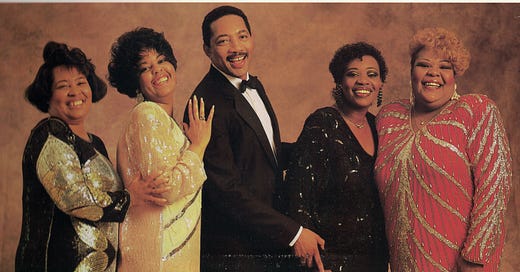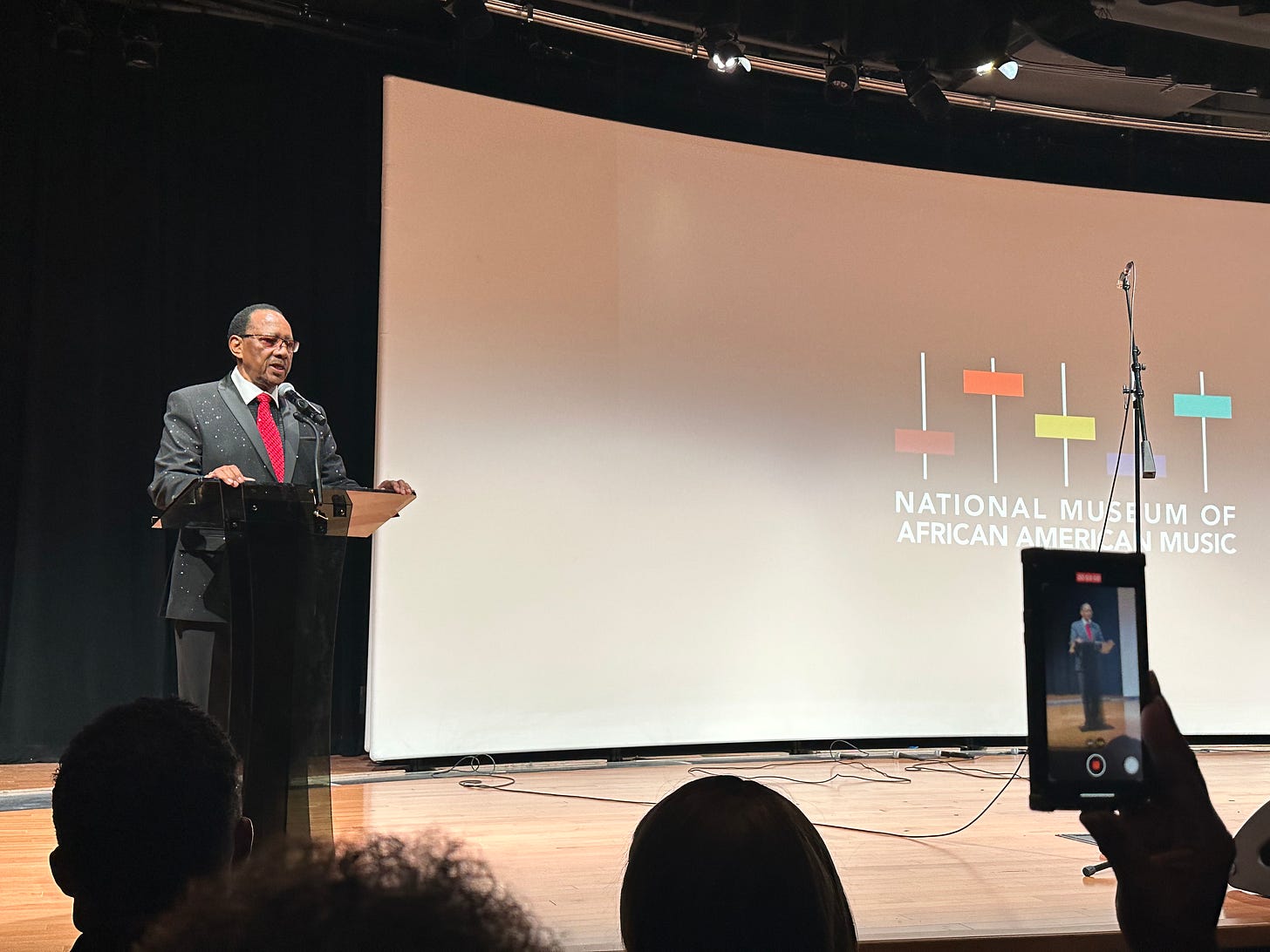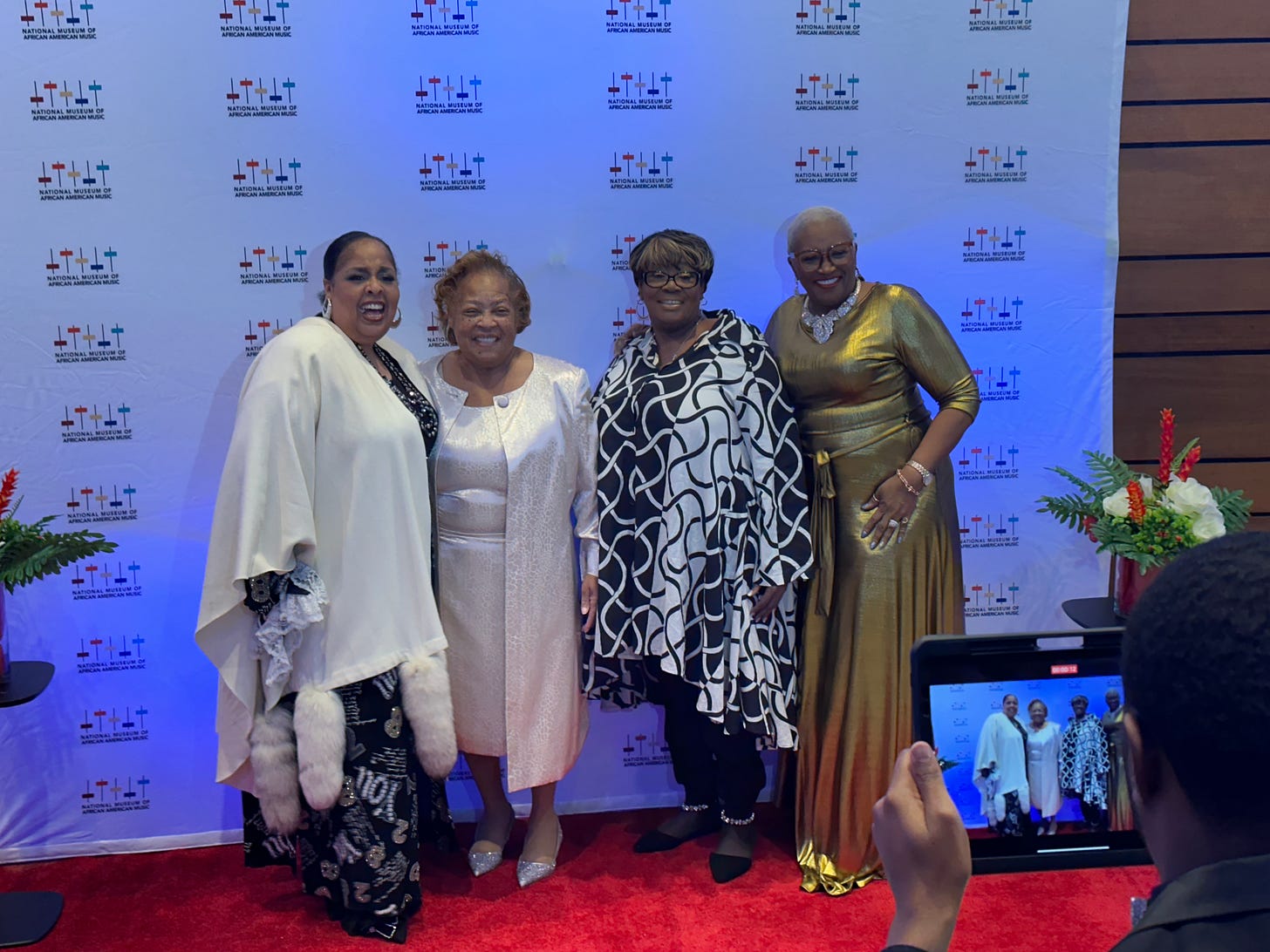Dr. Bobby Jones & the Gospel Explosion
With the unveiling of his exhibit at the National Museum of African-American Music this past weekend, we review the early musical contributions of this gospel music innovator.
This past Sunday evening, a few hundred people gathered at the National Museum of African American Music in Nashville to celebrate the work of Dr. Bobby Jones, an innovative force in gospel music who brought the form into millions of homes internationally with his weekly telecast, Bobby Jones Gospel. The show began on local television in Nashville in 1981 and then, by 1985, was seen in over 500 markets including, according to a Tennessean feature that year, “BET and CBN TV channels, the major-market PBS stations and the Armed Forces network.”
Jones’ career as a recording artist, with his New Life aggregation, began with 1977’s Sooner or Later, an independently produced album that led to a two album deal with Nashville’s Nashboro Records. It was at Nashboro that Jones introduced songs that would become through-lines in his career, showing up consistently on the Bobby Jones Gospel, reinvented by the various incarnations of the New Life Singers and, later, the Nashville Super Choir.
In 1982, he recorded two albums, produced by Tony Brown (Shirley Caesar, Reba McEntire) for Myrrh Records, bridging the worlds of gospel and CCM. “I’m So Glad I’m Standing Here Today,” a collaboration that paired Jones’ New Life with Barbara Mandrell, won a Grammy in 1984 for Best Soul Gospel Performance by a Duo or Group.
“I do intend to mainstream the music we sing,” he told Billboard in 1984. “That’s just good business. I think people who want to be evangelists should be evangelists in the truest sense, which means you sing for free and you do everything as a donation.”
Jones did just that, taking New Life to Charlie Daniels’ Volunteer Jam, Las Vegas with Barbara Mandrell, President Bill Clinton’s inauguration and to concert stages around the world. Bobby Jones Gospel expanded the idea of what gospel was and who it included, integrating artists deemed secular, forcing audiences to contemplate the notions of division rationalized as sanctification. He told The Tennessean in 1982, “Our contract with BET stipulates that for national appeal, talent must be recognizable recording artists. We haven’t been discriminating in style or trends. We’ve had all elements—black, country, pop.”
With his massive accomplishments, the music tends to receive a cursory glance in his career retrospectives—and we intend to remedy that today. Let’s take a look at some of the significant early musical contributions that helped build Dr. Jones’ career.
“Worship & Adore” and Medley—from Saturday Night Sing (1985)
On the road promoting Dr. Jones’ 1985 Light Records release, Another Time, this incarnation of New Life features original member Francine Belcher, Emily Harris (who joined the group in 1982) and Charles Miller, Johnny Whittaker and Robin Johnson who’d all come from Whittaker’s 21st Century Singers. “Worship and Adore,” written by Loris Holland (who that same year significantly contributed to Tramaine Hawkins’ The Search is Over) kicks off the set and is followed by a tour de force medley that displays the showmanship and vocal prowess of every singer in the group and the dynamic musical direction of Derrick Lee.
The medley includes “I’m Willing” (a Jones composition from 1984’s Come Together) and “He’ll Step Right In On Time,” written by the prolific former New Life musical director Gerry Jones, first recorded on 1979’s Caught Up. In this version, Johnny Whittaker takes the lead. “Step Right In” would also become a signature song for future New Life member, Beverly Crawford.
“We Won’t Give Up” from Caught Up (1980)
Written and produced by Danny Taylor for Jones’ second Nashboro release, Caught Up, and re-recorded again in 1990 for he and New Life’s Malaco album, I’ll Never Forget, “We Won’t Give Up,” has a direct political message that was not lost on Jones. He explained to the Tennessean in 1990 that he recorded the song “for the movement, for people who are struggling of all sorts—the women’s movement, the gay rights movement, the AIDS people, the Mandela folks in South Africa, the Jesse Jackson folks. That’s who the song is for.” It should be noted that Jones was the first gospel music personality to utilize his television platform not only to mention AIDS, but to invoke care, compassion and empathy at a time when fear and vilification were the dominant responses.
Charles Miller provides the fiery ad-libs in this overlooked and important gem.“God Will Deliver” from Bring It To Jesus (1993)
The last recorded incarnation of New Life (Francine Belcher, Emily Harris, Angela Primm, Nuana Dunlap and Beverly Crawford) brought more than just gospel music into people’s homes every Sunday morning. They brought the Holy Ghost.
Their 1993 Tyscot Records release, Bring It To Jesus, incorporated the polish Jones’ New Life brand was known for and the fire of the Sanctified church together. This performance from the 1996 Gospel Explosion at Nashville’s War Memorial Auditorium conveys why this particular configuration of the group remains beloved (Don’t miss my conversation with these powerful women).







The Holy Ghost! Right on time!